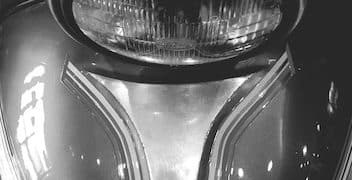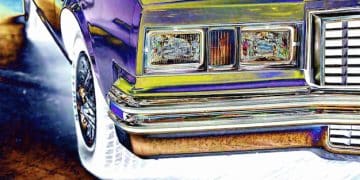The Art of Automotive Upholstery: Comfort and Style in Car Interiors
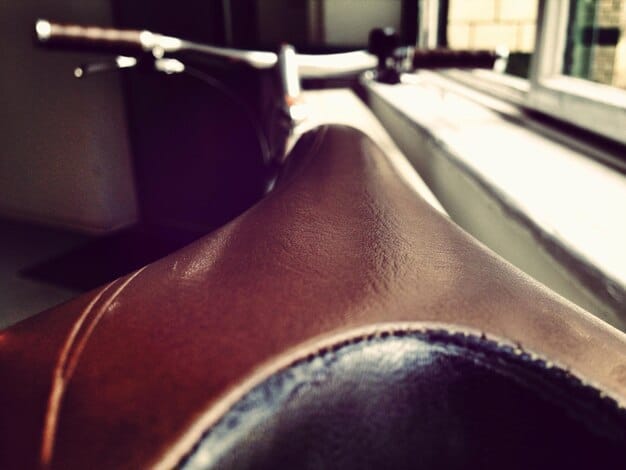
The art of automotive upholstery involves much more than just covering seats; it’s a blend of craftsmanship, design, and material science, aimed at enhancing comfort, aesthetics, and the overall driving experience in car interiors.
Automotive upholstery is often an unsung hero in the realm of car culture. More than just fabric and stitching, it’s an art form that blends comfort, style, and durability, significantly impacting the driving experience. Let’s delve into the art of automotive upholstery: crafting comfort and style in car interiors.
Understanding Automotive Upholstery
Automotive upholstery refers to the materials and techniques used to cover the seats, door panels, headliners, and other interior surfaces of a vehicle. These elements not only enhance the visual appeal of the car but also contribute to the comfort and overall driving experience. From classic cars to modern vehicles, upholstery plays a crucial role in defining the interior.
Historical Significance
The history of automotive upholstery mirrors the evolution of the automobile itself. Early cars featured basic, functional interiors, with durable but often uncomfortable materials. As cars became more refined, so did the upholstery. Materials like leather and wool were introduced to add a touch of luxury. Today, a wide range of materials and techniques are available, providing endless possibilities for customization and style.
Modern Materials
Modern automotive upholstery utilizes a diverse array of materials, each offering unique benefits. Leather remains a popular choice for its luxurious feel and durability. Synthetic materials like vinyl and Alcantara offer similar aesthetics with enhanced resistance to wear and tear. Fabric options range from durable polyester to breathable cotton blends. The choice of material depends on factors like budget, style preferences, and intended use.
The world of automotive upholstery offers a rich blend of history, material science, and design. Understanding these elements provides a foundation for appreciating the craft and its impact on the driving experience.
The Upholstery Process: A Detailed Look
The upholstery process is a meticulous undertaking that requires skill, precision, and attention to detail. Whether restoring a vintage vehicle or customizing a modern interior, the steps involved are crucial for achieving a professional finish. Let’s explore the intricacies of the upholstery process.
Preparation and Disassembly
The first step is careful preparation. This involves removing the existing upholstery, taking detailed notes and photographs to document the original construction. The old material serves as a template for the new upholstery. Disassembly must be done with care to avoid damaging the underlying frames and structures.
Cutting and Sewing
Once the old upholstery is removed, the new material is cut and sewn. This requires precise measurements and skilled craftsmanship. Patterns are carefully laid out on the material, ensuring minimal waste. Sewing techniques vary depending on the material and design, ranging from simple straight stitches to intricate diamond patterns.
Installation and Finishing
The final step involves installing the new upholstery. This requires stretching, shaping, and securing the material to the underlying frames. Hog rings, clips, and adhesives are used to ensure a snug and secure fit. Finishing touches like trimming excess material and adding decorative stitching complete the process.
- 📏 Precise measurements are essential for accurate pattern cutting.
- 🧵 Skilled sewing techniques ensure durability and aesthetic appeal.
- 🛠️ Careful installation guarantees a snug and secure fit.
- 🎨 Attention to detail in finishing touches elevates the overall look.
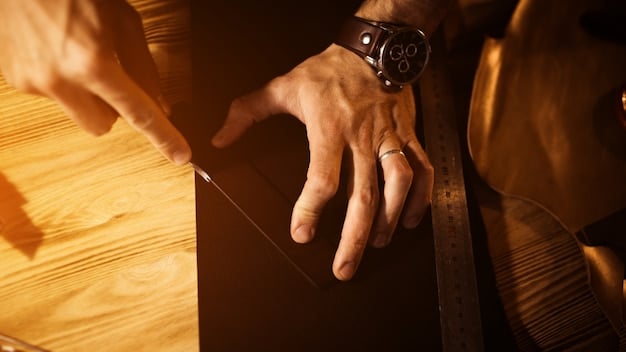
The upholstery process is a blend of art and science. From preparation to installation, each step demands precision and expertise, resulting in a comfortable and stylish car interior.
Choosing the Right Materials
Selecting the correct materials is pivotal to the longevity, comfort, and aesthetic appeal of automotive upholstery. The choice depends on several factors, including budget, style preferences, and the vehicle’s intended use. Let’s explore some common material options.
Leather: Luxury and Durability
Leather is a premium choice, known for its luxurious feel and durability. It requires regular maintenance to prevent cracking and fading, but its timeless aesthetic makes it a popular option for high-end vehicles. Full-grain leather, in particular, is prized for its natural beauty and resilience.
Vinyl: Affordable and Versatile
Vinyl is a synthetic alternative to leather, offering similar aesthetics at a lower cost. It is easier to clean and more resistant to stains, making it a practical choice for family vehicles and everyday use. Vinyl comes in a variety of textures and colors, providing versatility in design.
Fabric: Comfort and Breathability
Fabric upholstery offers comfort and breathability, particularly in warmer climates. Options range from durable polyester to breathable cotton blends. Fabric is often more affordable than leather or vinyl, but it may require more frequent cleaning to maintain its appearance.
Choosing the right materials involves balancing cost, aesthetics, and practicality. Each option offers unique benefits, and the best choice depends on individual needs and preferences.
DIY vs. Professional Upholstery Services
When it comes to automotive upholstery, car owners often face a critical decision: should they tackle the project themselves, or enlist the services of a professional? There are pros and cons to each option, and the best choice depends on factors like budget, skill level, and desired outcome. Let’s weigh the advantages and disadvantages of DIY versus professional upholstery services.
The DIY Approach
Opting for a do-it-yourself approach can be a cost-effective way to update your car’s interior. DIY upholstery allows for complete control over the materials, design, and schedule. However, it also demands a significant investment of time and effort, and may require specialized tools and skills.
Professional Upholstery Services
Professional upholstery services offer expertise and precision, ensuring a high-quality and long-lasting finish. While this option typically entails a higher upfront cost, it can save time and frustration. Professionals have access to specialized equipment and materials, and can handle complex designs and installations with ease.
Considerations
Consider the complexity of the project, the availability of resources, and your own skill level when deciding between DIY and professional services. Simple repairs or minor upgrades may be suitable for a DIY approach, while extensive restorations or custom designs are best left to the professionals.
- 💰 DIY upholstery can save money on labor costs.
- ⏱️ Professional services save time and effort.
- 🛠️ DIY requires specialized tools and skills.
- 💯 Professionals ensure a high-quality finish.
Choosing between DIY and professional upholstery services involves balancing cost, time, and skill. Evaluating these factors will help ensure a satisfactory outcome.
Maintaining Your Car’s Upholstery
Proper maintenance is essential for preserving the look and feel of automotive upholstery. Regardless of the material, regular cleaning and care can extend the life of your car’s interior and protect against wear and tear. Let’s explore some best practices for maintaining your car’s upholstery.
Regular Cleaning
Regular cleaning prevents dirt and grime from accumulating on the upholstery. Vacuuming removes loose particles, while gentle cleaning solutions can tackle stains and spills. Avoid harsh chemicals that can damage the material. It’s important to spot-test any cleaning product in an inconspicuous area before applying it to the entire surface.
Protecting Against Damage
Protecting against damage involves using seat covers, parking in shaded areas to prevent fading, and avoiding sharp objects that can tear the upholstery. Regular conditioning can also help maintain the flexibility of leather and vinyl, preventing cracking and drying.
By following these maintenance tips, you can keep your car’s interior looking its best for years to come.
Trends in Automotive Upholstery
The world of automotive upholstery is constantly evolving, with new trends emerging to meet changing consumer preferences. From sustainable materials to innovative designs, there are several exciting trends shaping the future of car interiors. Let’s explore some of the latest developments in automotive upholstery.
Sustainable Materials
With growing concerns about environmental impact, sustainable materials are gaining popularity in automotive upholstery. Recycled fibers, plant-based fabrics, and eco-friendly dyes are being used to create environmentally responsible interiors. These materials not only reduce waste but also offer unique textures and aesthetics.
Customization and Personalization
Customization and personalization are key trends, with car owners seeking unique ways to express their style. Options range from custom stitching patterns to personalized color schemes. Advanced technologies like 3D printing are enabling even more intricate and tailored designs.
Technological Integration
Technological integration is another exciting trend, with features like heated and cooled seats becoming increasingly common. Advanced sensors and smart fabrics are being developed to automatically adjust temperature and provide optimal comfort.
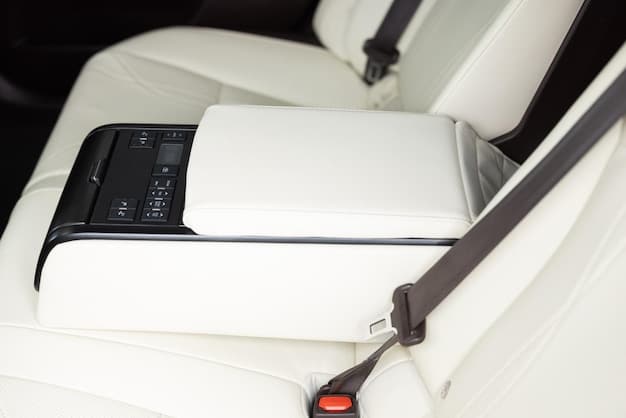
Emerging trends in automotive upholstery reflect a growing emphasis on sustainability, personalization, and technological innovation. These developments are transforming the driving experience, making car interiors more comfortable, stylish, and environmentally friendly.
Conclusion
In conclusion, the art of automotive upholstery is a blend of functionality and aesthetics. It significantly contributes to the overall value, comfort, and style of a vehicle. Whether you’re restoring a classic car or upgrading a modern one, understanding the nuances of upholstery can transform your driving experience.
| Key Aspect | Brief Description |
|---|---|
| 🧵 Material Choice | Leather, vinyl, and fabric each offer unique benefits. |
| 🛠️ DIY vs. Professional | DIY saves money, while professionals ensure quality. |
| 🧼 Maintenance Tips | Regular cleaning and protection prevent wear. |
| 🌱 Sustainable Materials | Eco-friendly options enhance environmental responsibility. |
FAQ
▼
The main types include leather, vinyl, and fabric. Leather offers luxury and durability, vinyl is affordable and versatile, and fabric provides comfort and breathability.
▼
It is recommended to vacuum your car’s upholstery at least once a month. Stains and spills should be cleaned immediately to prevent permanent damage.
▼
Professional services ensure a high-quality finish, save time and effort, and can handle complex designs and installations with ease.
▼
Trends include the use of sustainable materials, customization and personalization options, and technological integration such as heated and cooled seats.
▼
Use seat covers, park in shaded areas to prevent fading, avoid sharp objects that can tear the upholstery, and regularly condition leather and vinyl.
Conclusion
The artistry of automotive upholstery is a vital aspect of car culture, offering an intricate blend of personal style and overall comfort. Whether you’re a passionate car enthusiast or simply seeking to enhance your daily driving experience, understanding the world of automotive upholstery opens up a realm of possibilities, from luxury upgrades to sustainable innovations.

